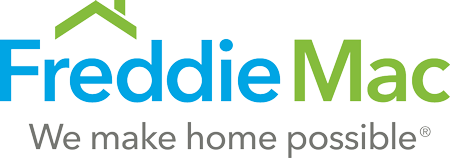 Mortgage lenders now have an easier way to do business with Freddie Mac, as the company officially rolled out the first phase of its new Loan Advisor Suite on July 11.
Mortgage lenders now have an easier way to do business with Freddie Mac, as the company officially rolled out the first phase of its new Loan Advisor Suite on July 11.
The suite of Web-based applications covers the entire loan lifecycle – from application to closing to servicing. It is designed to not only automate compliance with Freddie Mac’s guidelines, but also help lenders achieve new operational efficiencies, improve loan quality and provide greater certainty about repurchase risk. In addition, each application in the suite delivers actionable data and information to lenders in an automated fashion to help speed the origination process and improve monitoring and reporting on all of their origination and secondary marketing activities.
At the center of the suite is Loan Product Advisor, a revamped version of Freddie Mac’s Loan Prospector automated underwriting system that gives lenders access to the company’s credit requirements, as well as a detailed view of their credit risk. The new version sports all of the features and capabilities that lenders have come to expect but with a fresh, new look and improved functionality, usability and transparency.
Now, actionable underwriting and eligibility feedback is presented in a clear, redesigned Feedback Certificate. In addition, improved navigation allows users to move from section to section in the Feedback Certificate more easily. The certificate also displays new cash-to-close feedback messages that remove the need to verify all cash sources.
The suite also includes enhanced versions of Loan Quality Advisor, the company’s risk assessment and eligibility tool; Loan Coverage Advisor, its comprehensive loan management system; and its Selling System, which is used for pricing, contracting and loan delivery.
In addition, the company is introducing three new solutions: Loan Collateral Advisor, an advanced appraisal scoring tool; Loan Closing Advisor, which helps lenders validate their closing data against the Uniform Closing Dataset for completeness, accuracy of calculated values and data consistency; and the new, suite-wide Business Intelligence capability, which enables monitoring and leveraging of loan data to help lenders produce high-quality loans. Loan Closing Advisor is available now and rolling out through a phased approach. Interested lenders should contact their account representatives. Loan Collateral Advisor will be available later this summer, followed by the Business Intelligence capability in the fall.
To make the applications easier to access, Freddie Mac is bundling all of them together in a central Web portal. That means lenders will be able to access all of the applications in the suite using a single sign-on. As with Loan Prospector previously, all of the applications in the suite are being offered free of charge.
According to Chris Boyle, senior vice president and head of single-family sales and relationship management for Freddie Mac, the goal in rolling out the suite, which took nearly two years to develop, is basically two-fold. “First, we’re trying to create certainty.”
“Our seller/servicer guide outlines all of the terms, conditions and rules for doing business with Freddie Mac. Loan Advisor Suite automates all that in a way that creates transparency, certainty and speed – and at the end of the day, lowers costs,” Boyle tells MortgageOrb. “What we’re doing is delivering our credit policy and our processes in a highly intuitive technology solution as opposed to a paper guide.”
By automating compliance with Freddie Mac’s guidelines, she says, lenders will be able to eliminate certain manual processes and originate loans faster. What’s more, the suite of tools will help improve loan quality, which, in turn, will pave the way to providing lenders with relief from reps and warranties concerns, including the risk of loan buybacks.
“These tools deliver our policies and procedures in a way that is very consumable and uniform across all lenders and servicers,” Boyle says.
The second goal is to create business process efficiencies for lenders. By bundling the applications together on a shared platform and giving them all the same “look and feel,” users will spend less time signing in and out of applications, changing screens, and finding the various buttons used to execute commands. In addition to providing much more user-friendly controls, the built-in Business Intelligence capability means lenders can more efficiently manage and use the loan data associated with each application. Essentially, the suite allows lenders to leverage existing data sets and automate the delivery of pertinent information at key junctures throughout the entire mortgage process so as to “guide” users step by step through each process, delivering key data where needed to drive improved transparency and insights.
The new appraisal application, Boyle says, is a good example of how the suite will help lenders gain new efficiencies.
“Right now, you submit appraisal data into the Uniform Collateral Data Portal, and we analyze it and run it against basic checks for appraisal completeness and reasonableness – but there is not a lot of feedback on the quality of the appraisal or the accuracy of the appraised value. As a result, lenders will perform extensive reviews on all appraisals,” Boyle explains. “But with Loan Collateral Advisor, lenders will get information that can help them build efficiencies in their process and target appraisals with the highest risk for escalated reviews – and lenders will be able to realize real cost savings.”
“Loan Closing Advisor is also a good example of how lenders will improve efficiency through the suite,” Boyle continues. “A lot of lenders, because of the TILA-RESPA Integrated Disclosures rule and because of the mistakes that were made in the origination process, put in what we call ‘QA,’ or quality assurance, before they closed loans. We’re talking about a lot of manpower that’s currently invested in checking these loans before they go to closing. Well, from our perspective, if you’ve got the data and you’ve pulled it through from the very beginning of that loan, you don’t need to continue that expensive process because it’s been pulled through – and if you run it through Loan Closing Advisor, it will tell you there’s an inconsistency in the data that needs to be checked. So, in that regard, you don’t need somebody rechecking a whole loan file – every document and every bit of data – and there’s huge cost savings in all of that.”
Having the guidelines and information baked into each application will also help lenders achieve new efficiencies, Boyle says.
“If a lender already knows from an investor perspective that the appraisal meets the investor’s requirements, then it helps to remove any guesswork,” she says. “If they don’t have any perspective on that, then they have to spend more time trying to get confident that the appraisal will be acceptable. That’s one way to think about it – we’re providing confidence to our customers.”
Andy Higginbotham, senior vice president and head of single-family strategic delivery for Freddie Mac, says the development of the suite is the result of extensive feedback from the lender community. Freddie Mac teamed up with 15 different development partners, including numerous experts who have been involved in the development of origination technology, to get their input on these applications.
Part of the reason so many experts were involved, Higginbotham says, is not only because there are six different applications, each requiring a unique set of expertise, but also because “every lender has its own way of originating loans – there are slight differences between all their processes,” and the various workflows had to be considered when developing certain applications.
A big part of the job, he says, has been figuring out exactly how various lenders will be using the applications. For that reason, all of the applications have been undergoing trial testing in live environments with about 20 different numerous lenders, running in size from big to small, during the past six months or so.
“The whole intent was to develop a comprehensive suite of tools that would address every portion of the loan origination process – and to create utilities, or services, if you will, that could be called upon at the appropriate points during the process,” Higginbotham explains. “We also wanted to create a similar, more user-friendly interface across the suite. Our efforts with Loan Quality Advisor and Loan Coverage Advisor were focused on getting the look and feel consistent with the new tools. While there was some recoding, it was not extensive. And then, of course, we’ve added a layer of business intelligence across everything to bring it all together.”
In terms of software deployment, lenders have two options: They can use the portal to access the applications on an as-needed basis or they can have the suite integrated with their loan origination system (LOS), which facilitates a greater degree of automation.
“The full integration is always going to give a lender the maximum productivity lift – which is one of our two main objectives,” Higginbotham says. “We want to make sure that they’re taking steps out of the process – that they’re not rekeying information and data when they don’t need to. We want to automate their manual checklist processes. And that’s what we do with the tools we provide. And because we use Mortgage Industry Standards Maintenance Organization (MISMO) data sets as our method of translation, we’re already on a common interface approach, which makes the integration a lot less of an effort than it would’ve been in the past.”
Higginbotham adds that Freddie Mac has been working with the LOS providers to develop the integrations.
“They’re not really custom integrations – most of the LOS’ already export a set of data that looks like the MISMO format that we’re all used to seeing,” he explains. “Examples of the data sets that we’re using for the applications include the appraisal data set for Loan Collateral Advisor; the closing data set for our Loan Closing Advisor; and the ULDD, or uniform loan data and delivery set, for our Loan Quality Advisor.”
He adds that leading LOS provider Ellie Mae was able to carry out its integration “within a matter of weeks.”
In addition to the ability to quickly and seamlessly integrate with the leading LOS’, lenders also have the option to use the applications in the suite on a stand-alone, or “a la cart,” basis.
Boyle says although some lenders will opt for the “a la cart” approach, at least initially, “I don’t know why they wouldn’t use the full suite because it doesn’t cost anything – and it gives them a wealth of information. It’s more powerful if you use the end-to-end solution.”
When asked why Freddie Mac is offering the full suite free of charge, Boyle explains that it was never the company’s objective to create a revenue stream from the licensing of software. What’s more, she says, it is really to Freddie Mac’s benefit, in terms of operational efficiency, that lenders use its software.
“The reason we waived the licensing fees for Loan Prospector [last year] is it was never intended to be a revenue stream for us,” Boyle says. “Loan Prospector, and now, Loan Product Advisor, is our credit decisioning model – and we want people to use it so that they have certainty and transparency. We decided, ‘Well, why charge for it, then? If we want them to use it, then why don’t we give it to them?’ That was the reason we took the cost out. And we did that knowing we would come out with an entire suite of tools that would automate the loan manufacturing process as it relates to investor requirements.”
Perhaps most important of all, the launch of Loan Advisor Suite pushes Freddie Mac ahead of the rest of the mortgage industry in terms of technology investment.
“Before 2008, there was a real need to update the mortgage world of technology,” Higginbotham adds. “But then the crisis came along, and with the ensuing regulations, mortgage lenders ended up having to put in more manual processes to ensure loans met new requirements and to reduce repurchase risks.”
“With Loan Advisor Suite, we can give lenders a greater degree of comfort that, later on down the road, buybacks won’t be a concern – that they can avoid that issue via automation as opposed to hiring more checkers to check the checkers.”











